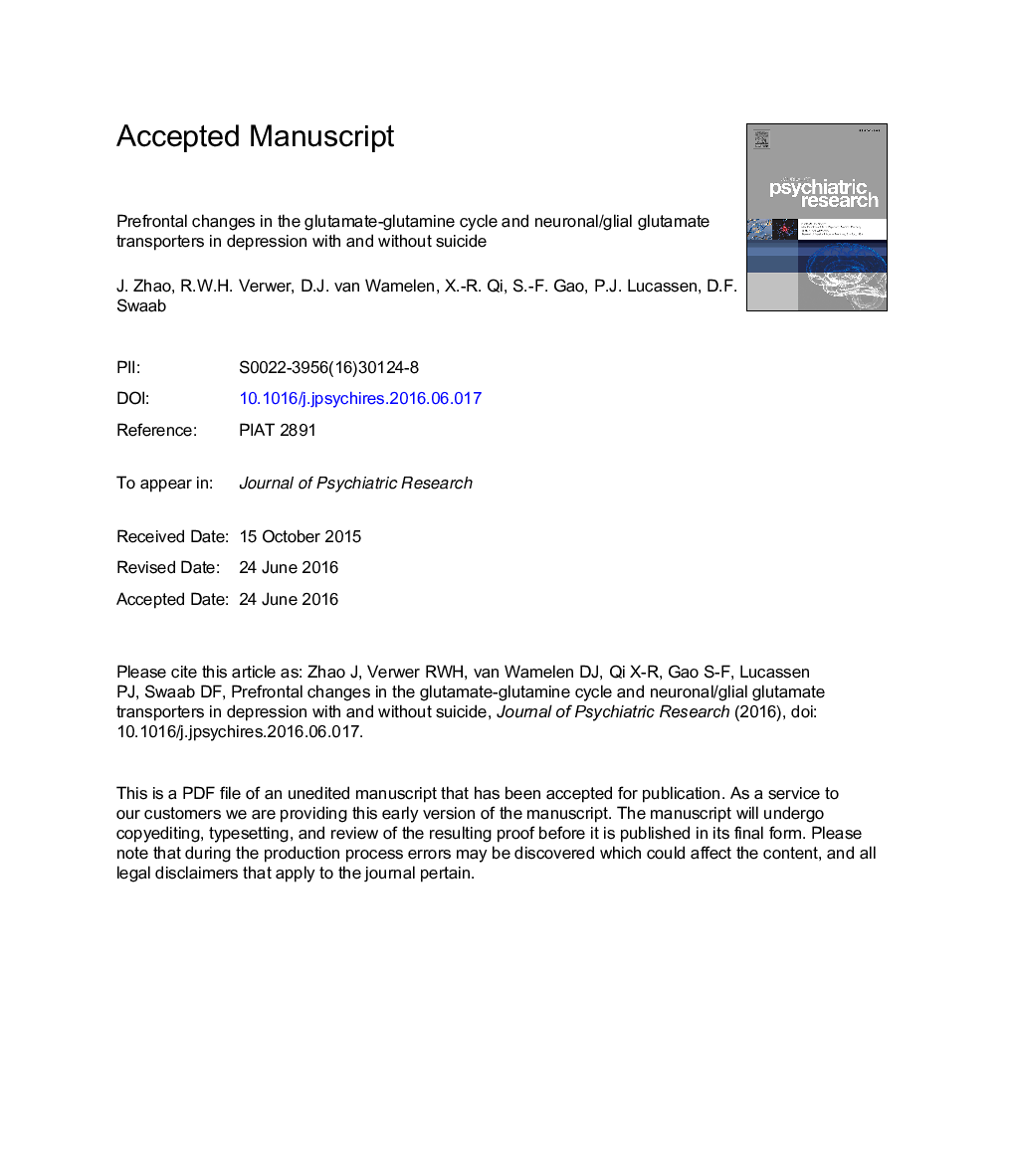| Article ID | Journal | Published Year | Pages | File Type |
|---|---|---|---|---|
| 6799894 | Journal of Psychiatric Research | 2016 | 35 Pages |
Abstract
There are indications for changes in glutamate metabolism in relation to depression or suicide. The glutamate-glutamine cycle and neuronal/glial glutamate transporters mediate the uptake of the glutamate and glutamine. The expression of various components of the glutamate-glutamine cycle and the neuronal/glial glutamate transporters was determined by qPCR in postmortem prefrontal cortex. The anterior cingulate cortex (ACC) and the dorsolateral prefrontal cortex (DLPFC) were selected from young MDD patients who had committed suicide (MDD-S; n = 17), from MDD patients who died of non-suicide related causes (MDD-NS; n = 7) and from matched control subjects (n = 12). We also compared elderly depressed patients who had not committed suicide (n = 14) with matched control subjects (n = 22). We found that neuronal located components (EAAT3, EAAT4, ASCT1, SNAT1, SNAT2) of the glutamate-glutamine cycle were increased in the ACC while the astroglia located components (EAAT1, EAAT2, GLUL) were decreased in the DLPFC of MDD-S patients. In contrast, most of the components in the cycle were increased in the DLPFC of MDD-NS patients. In conclusion, the glutamate-glutamine cycle - and thus glutamine transmission - is differentially affected in depressed suicide patients and depressed non-suicide patients in an area specific way.
Related Topics
Life Sciences
Neuroscience
Biological Psychiatry
Authors
J. Zhao, R.W.H. Verwer, D.J. van Wamelen, X.-R. Qi, S.-F. Gao, P.J. Lucassen, D.F. Swaab,
